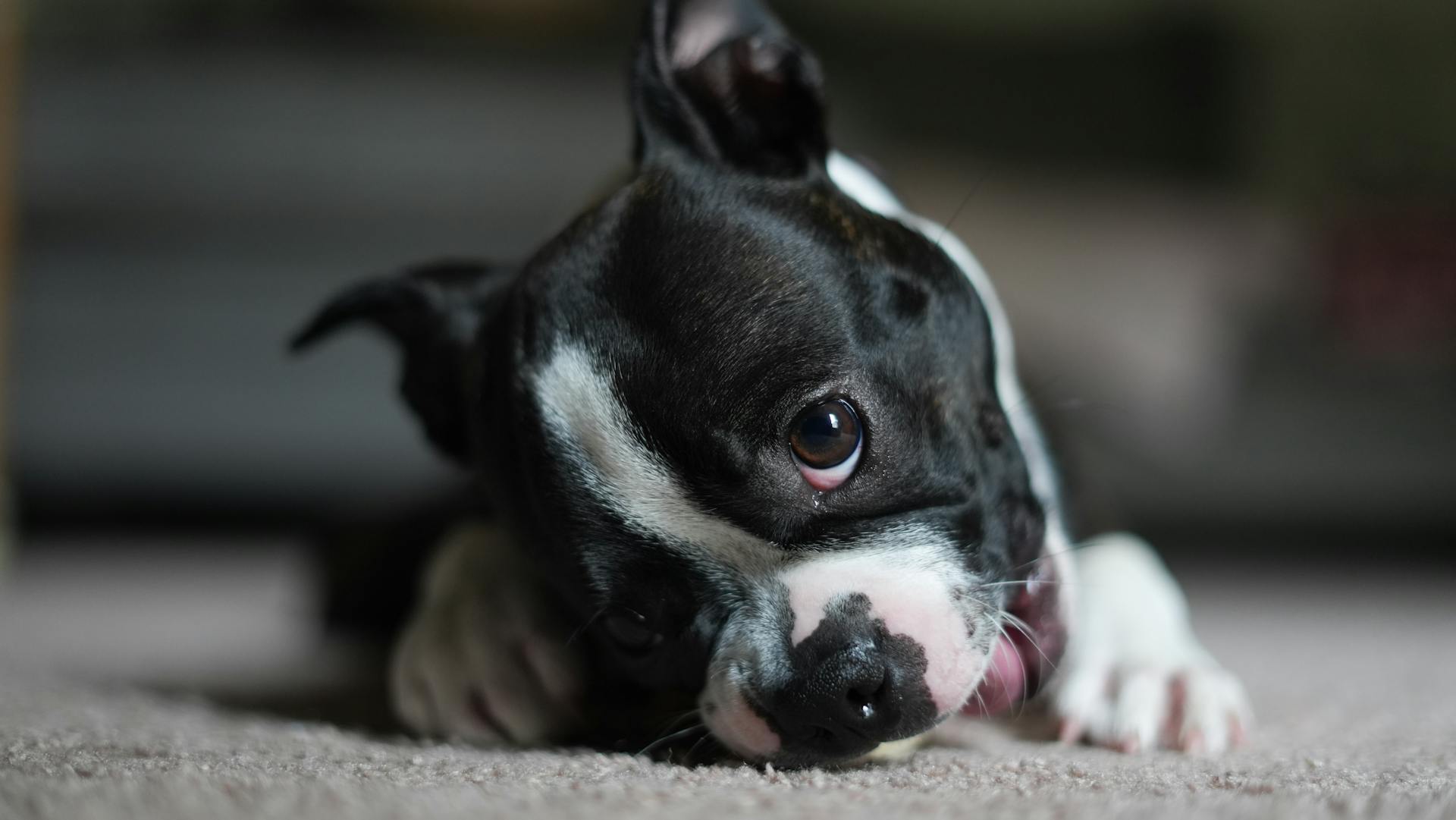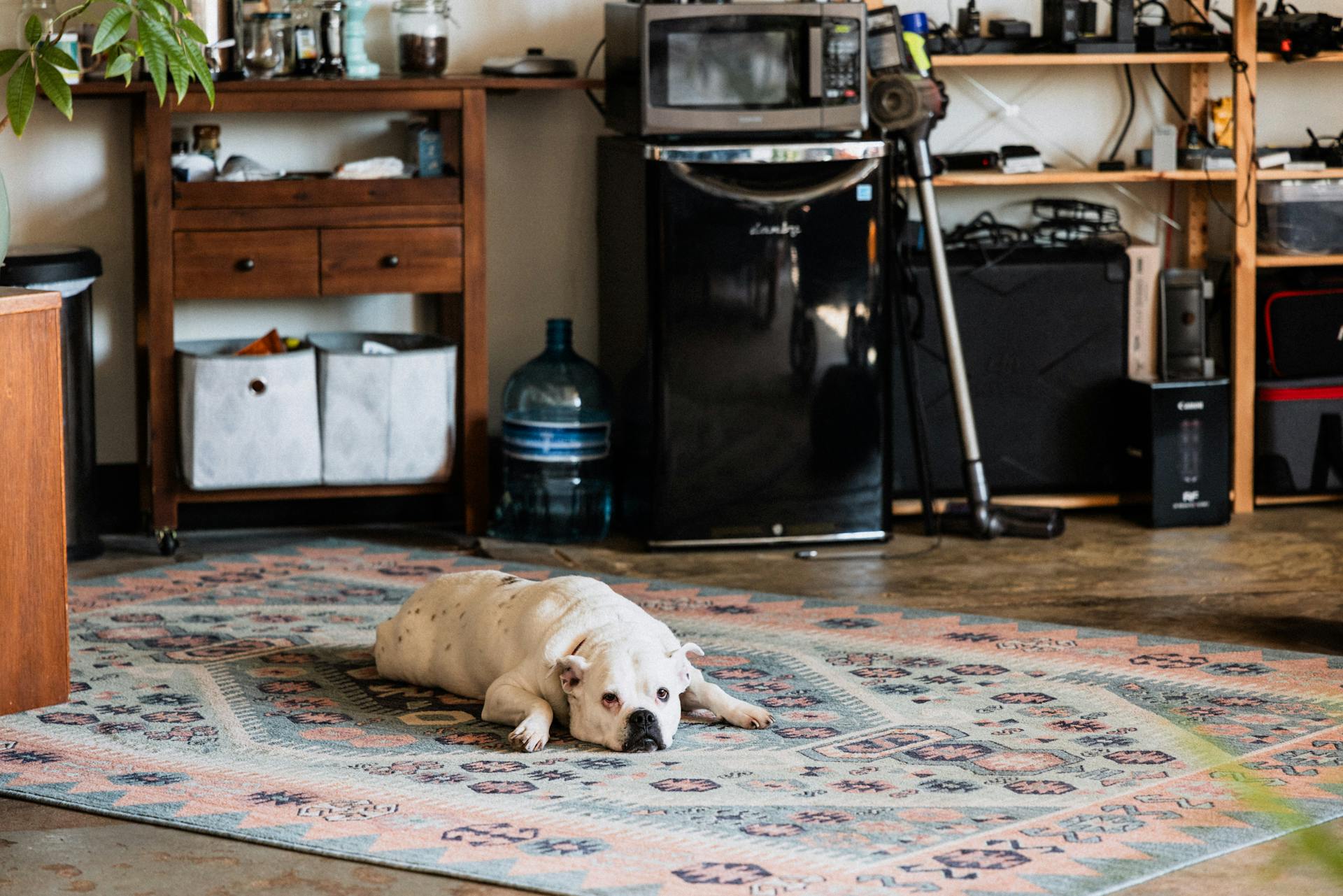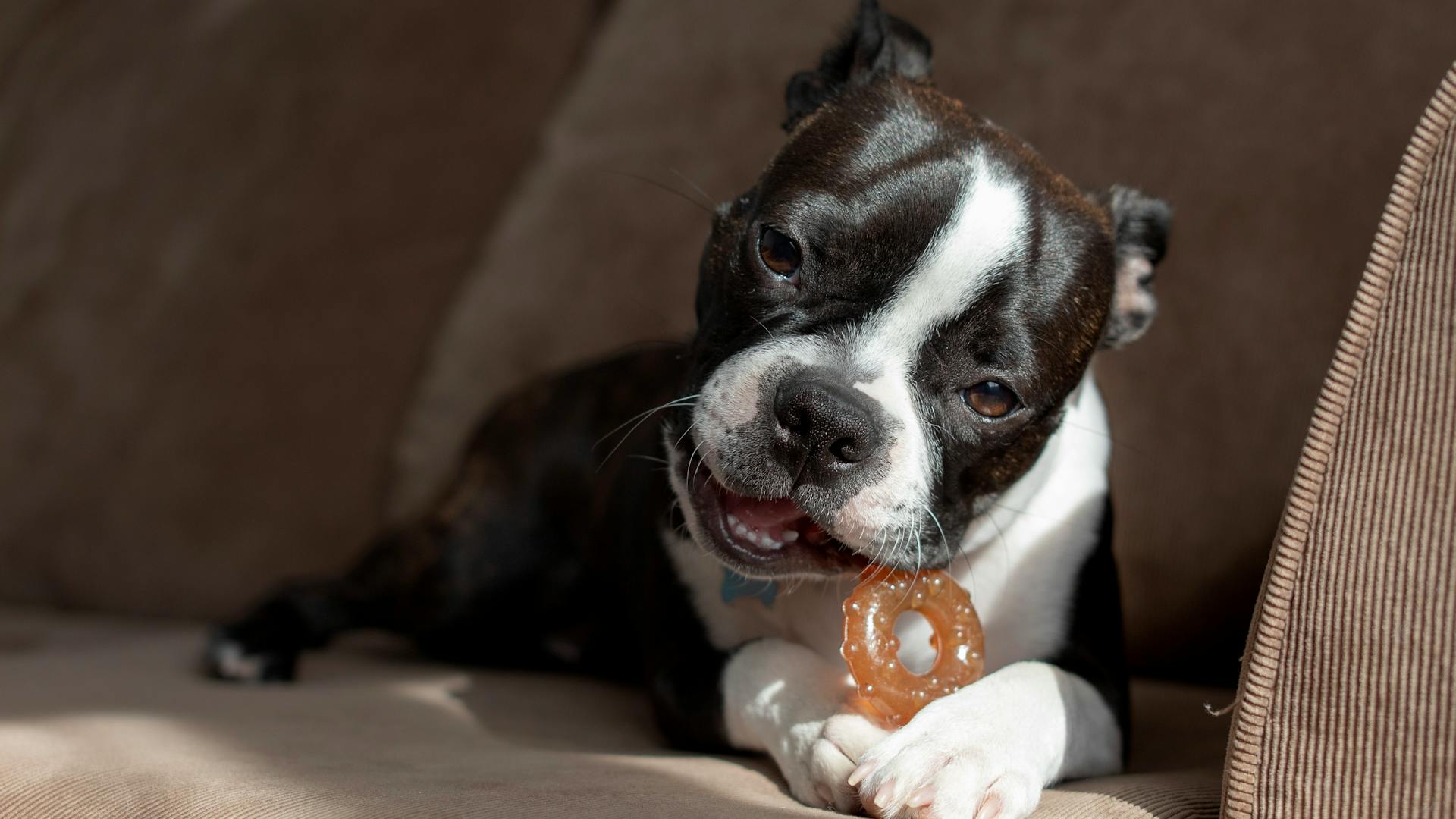
Boston Terriers are known for their affectionate and gentle nature, but they can be strong-willed and stubborn at times. This means they require consistent training and housebreaking.
A crate can be a valuable tool for new Boston Terrier owners, helping to establish a routine and prevent accidents in the house. Boston Terriers are naturally clean animals and don't like to soil their living area, making crate training a good fit for this breed.
By crate training your Boston Terrier, you can help them learn to hold their bladder and bowels until they're taken outside. This can save you time and effort in the long run, as well as prevent accidents and messes in the house.
Discover more: House Training Boston Terrier
Choosing the Right Crate
A crate that's too small can make your Boston Terrier feel trapped, while an overly spacious one can make them feel lonely and use part of the space as a potty area.
The ideal crate size for a Boston Terrier is typically around 24 inches long, which allows them to move around freely without being cramped.
A different take: Yorkshire Terrier Crate
Your average Boston Terrier is about 16 to 17 inches tall and weighs about 15 to 25 pounds, making them relatively small compared to other dog breeds.
A rule of thumb is that you want your dog to be able to turn around and stretch out comfortably, whether it's standing up or lying on its back.
Choosing the correct crate size is crucial to ensuring your pet positively associates time spent in the facility, so don't opt for a smaller or bigger crate size based on your budget or space.
You can always use divider panels to make the crate feel cozier and provide your Boston Terrier with a comfortable crating experience.
A crate that's about 24 inches will be ideal for your Boston Terrier, allowing them to move around freely and making it easy for you to reach them if they're a bit shy.
For more insights, see: Boston Terrier Show Dog
Types to Consider
There are several types of dog crates to consider for your Boston Terrier. Plastic and wire crates are two popular options.
Plastic crates are a good choice for Boston Terriers because they are easy to clean and provide a comfortable space for your dog to rest. Wire crates are also a great option, especially for active dogs that need to stay active while in their crate.
Soft-sided crates are another option to consider, as they are lightweight and easy to transport. They're perfect for travel or for dogs that prefer a softer space to sleep.
Travel crates are a must-have for any dog owner who likes to travel with their pet. They provide a safe and comfortable space for your dog to ride in the car or plane.
Suggestion: Boston Terrier Similar Breeds
Housebreaking
Housebreaking is a crucial part of Boston Terrier ownership, and crate training can make it a whole lot easier. Crate training allows your Boston Terrier to establish a daily potty training rhythm or cycle, making it a standard part of dog ownership and care.
Related reading: How to Train a Boston Terrier
Using a crate can accelerate housebreaking and potty training, as most dogs take quite nicely to their crates and feel comfortable in them. In fact, crate training has become a popular and recommended method for many dog owners.
It's essential to have more than one crate when house training a puppy to avoid the hassle of cleaning up accidents at night. You'll want to have a crate for each dog, and it's not always best to put a second dog in a stacked crate.
A hard-sided crate is a great option for housebreaking, as it provides more protection than other types of crates and meets certain minimum safety requirements. In fact, I prefer traditional hard crates made of metal or plastic with a removable top section.
Crate training can also help with socialization, as it allows your Boston Terrier to feel secure and comfortable in its own space. This can be especially helpful when introducing your dog to new people, places, and things.
To crate train your Boston Terrier, start by establishing a regular potty training schedule and taking your dog out at regular intervals to relieve itself. You can also use a litter box or newspaper as an alternative when your dog can't go outside.
By following these steps and using a crate, you can make housebreaking a breeze and help your Boston Terrier become a well-behaved and well-adjusted member of your family.
A fresh viewpoint: When Does a Boston Terrier Stop Growing
Training Methods
Training your Boston Terrier requires patience and a soft, loving tone in your voice. They're ultra-sensitive to tone, so avoid yelling or scolding.
Praise training is recommended for Boston Terriers, as they tend to respond rebelliously when their feelings are hurt. This means focusing on positive reinforcement and rewarding good behavior.
Boston Terriers can be prone to indulgence, so it's essential to keep their caloric intake in check. Treat training is okay, but be sure to keep it minimal to avoid overfeeding.
Crate training is a great option for Boston Terriers, as they tend to take well to it. Crate training can help with housebreaking and potty training, and it's also beneficial for their emotional health.
Here are some key things to keep in mind when crate training your Boston Terrier:
- Crate training should be done in a way that teaches your dog to like spending time in its crate and to settle and be calm in it.
- Crate training should also teach your dog not to potty in its crate, howl, or bark while in the crate.
- Crate training is often the first and most important step in teaching a puppy or dog how to accept confinement.
Leash training usually goes over well with Boston Terriers, especially when you show them who's in charge and what's expected of them. With patience and consistency, you can have a nice little walker on your hands.
Sources
- https://www.hepper.com/what-size-crate-does-a-boston-terrier-need/
- https://ocdogtraining.com/housebreaking-potty-training-dogs-puppies/dog-training-crates-for-housebreaking-potty-training-behavior-management/
- https://bostonterrier.world/blogs/boston-terrier-world-blog/best-dog-crates-for-boston-terriers-on-amazon
- https://www.petcratesdirect.com/blogs/news/boston-terrier-fun-facts-and-crate-size
- https://www.dogster.com/lifestyle/what-size-crate-does-a-boston-terrier-need
Featured Images: pexels.com


